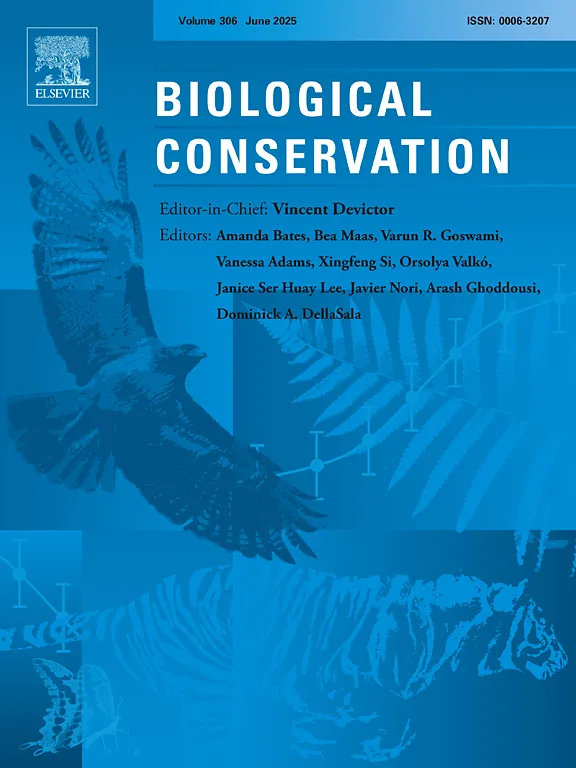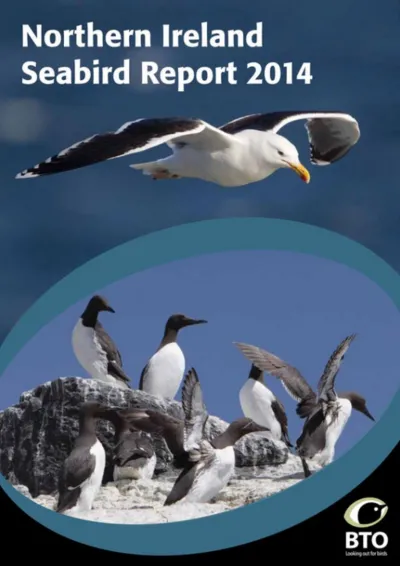BTO create and publish a variety of important articles, papers, journals and other publications, independently and with our partners, for organisations, government and the private sector. Some of our publications (books, guides and atlases) are also available to buy in our online shop.
Annual report of the Seabird Monitoring Programme
Seabird Population Trends and Causes of Change: 1986–2023
This report presents the latest seabird population trends in breeding abundance and productivity using data from the Seabird Monitoring Programme (SMP).
The report documents changes in the abundance and productivity of breeding seabird species in Britain and Ireland from 1986 to 2023, and provides a detailed account of the 2021, 2022 and 2023 breeding seasons.

Search settings
The contribution of volunteer recorders to our understanding of biological invasions
Author: Roy, H.E., Rorke, S.L., Beckmann, B., Booy, O., Botham, M.S., Brown, P.M.J., Harrower, C., Noble, D., Sewell, J. & Walker, K.
Published: 2015
23.03.15
Papers
Differential migration of chiffchaffs (Phylloscopus collybita and Phylloscopus ibericus) in Europe and Africa
Author: Catry, P., Lecoq, M., Araújo, A., Conway, G., Felgueiras, M., King, J.M.B., Rumsey, S., Salima, H. & Tenreiro, P.
Published: 2015
Avian migration strategies may include intra-specific variations, also known as differential migration. These migratory adaptations between conspecifics are particularly important given their implications for population dynamics. We aimed to examine the differential migration pattern as a function of age and sex, and whether this pattern also determines body morphology, in a passerine whose migration strategy includes movements to both pre- and sub-Saharan wintering areas. Thus, 1,100 common chiffchaffs Phylloscopus collybita were sampled during 2009–2012 at eight wintering locations within the Palearctic and Afrotropical regions. Biometric and body condition variables were studied for their relationship to geographical, climatic and productivity indexes. A higher proportion of adults and females were observed at lower latitudes. Common chiffchaffs were larger and in better body condition in sub-Saharan areas, coinciding with greater plant productivity and less annual rainfall. The selection of the southernmost areas by adults may be related to fidelity to more favourable sites. Southern and coastal locations offer better conditions for chiffchaffs, despite the challenges involved in crossing the Sahara Desert. Moreover, the greater skills of adults in finding abundant food resources may also drive greater relative abundance south of the Sahara. Greater body mass and fat deposits in birds wintering in sub-Saharan areas reflect higher resource availability and may imply that the birds are in better physical condition.
22.03.15
Papers
Seabird–wind farm interactions during the breeding season vary within and between years: A case study of lesser black-backed gull Larus fuscus in the UK
Author: Thaxter, C.B., Ross-Smith, V.H., Bouten, W., Clark, N.A., Conway, G.J., Rehfisch, M.M. & Burton, N.H.K.,
Published: 2015
The marine environment is increasingly subject to pressure from human activities, with knock on effects for wildlife. Many studies over recent years have attempted to assess the risk of offshore wind turbines to seabirds. Birds might be injured or killed through collision with turbines or associated structures, they might be displaced from an area they previously used, and they could suffer energetic costs of bypassing a wind farm instead of commuting straight through. BTO has been using long-lived GPS tags to conduct a multi-year study into the possible effects of offshore wind farms on Lesser Black-backed Gulls. Results show that birds’ use of the environment varies between individuals, throughout the breeding season and over the years. This information is essential to estimate the magnitude of risks posed by offshore wind developments to seabird populations as accurately as possible.
13.03.15
Papers

Northern Ireland Seabird Report 2015
Author: Leonard, K. & Wolsey, S.
Published: 2015
This is the third edition of the Northern Ireland Seabird Report, covering 2015. This report is the published outcome of the work of the British Trust for Ornithology (BTO) Seabird Coordinator, appointed in February 2013, and the activities of the evolving Northern Ireland Seabird Network of volunteers, and organisations such as National Trust, Ulster Wildlife and the RSPB that have provided data for 2015 and previous years.
02.03.15
Reports Northern Ireland Seabird Report

Northern Ireland Seabird Report 2014
Author: Leonard, K. & Wolsey, S.
Published: 2015
This is the second edition of the Northern Ireland Seabird Report, covering 2014. This report is the published outcome of the work of the British Trust for Ornithology (BTO) Seabird Co-ordinator, appointed in February 2013, and the activities of the evolving Northern Ireland Seabird Network of volunteers, and organisations such as National Trust, Ulster Wildlife and the Royal Society for the Protection of Birds (RSPB) that have provided data for 2014 and previous years.
01.03.15
Reports Northern Ireland Seabird Report
